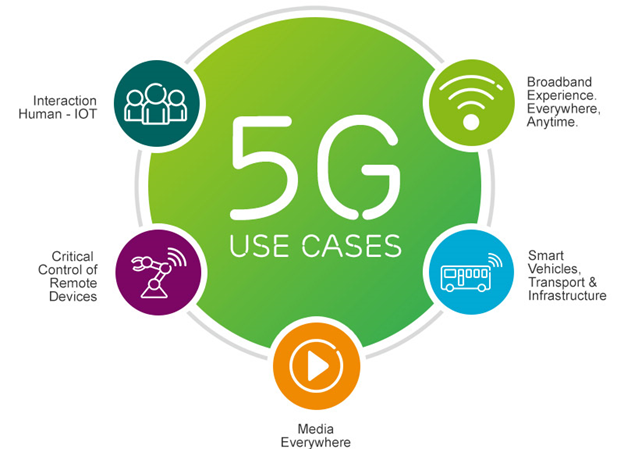Asia-Pacific Insights
Exploring the latest trends and news in the Asia-Pacific region.
5G: The Fast Lane to a Wired World
Discover how 5G is revolutionizing connectivity and speeding up our digital future. Join the fast lane to a wired world today!
Understanding 5G: What It Means for Connectivity
As the fifth generation of wireless technology, 5G represents a significant leap forward in connectivity. Unlike its predecessor 4G, which was primarily designed for mobile internet browsing, 5G offers ultra-fast data transfer rates, reduced latency, and the ability to connect a vast number of devices simultaneously. This enhancement opens up a plethora of possibilities, from improved mobile experiences to the development of smart cities and the Internet of Things (IoT). With the potential to reach speeds up to 100 times faster than 4G, industries such as healthcare, transportation, and entertainment are on the brink of transformation.
Moreover, the impact of 5G connectivity extends beyond mere speed. One of the key features of 5G technology is its ability to support advanced applications that were previously hindered by network limitations. For example, applications like augmented reality (AR) and virtual reality (VR) will benefit from the low latency of 5G, enabling seamless interactions that can enhance user experiences. Additionally, 5G is expected to revolutionize critical areas such as autonomous vehicles and remote surgeries, making them not only possible but safe and efficient. Understanding these advancements is crucial for individuals and businesses alike, as 5G will undoubtedly redefine how we connect to and interact with the world around us.

How 5G Technology is Transforming Our Daily Lives
5G technology is revolutionizing the way we communicate, work, and interact with our environment. With its remarkable speed and low latency, 5G enables seamless connectivity, allowing users to experience high-definition streaming, instant downloads, and improved gaming experiences. For example, a simple download that took several minutes on a 4G network can now be completed in mere seconds, enhancing productivity and entertainment for millions around the globe.
Moreover, 5G technology is facilitating the rise of smart cities and the Internet of Things (IoT), transforming daily life in unprecedented ways. Devices will be able to communicate with each other more efficiently, leading to improved traffic management, enhanced public safety, and better energy consumption. As autonomous vehicles become a reality and smart appliances become increasingly common, the influence of 5G technology will continue to shape our daily lives, making tasks more convenient and our surroundings more responsive.
Is 5G Safe? Debunking Common Myths About the Technology
The introduction of 5G technology has sparked numerous debates regarding its safety and potential health effects. Many common myths suggest that 5G can cause various health issues, from headaches to more severe conditions like cancer. However, reputable organizations such as the World Health Organization (WHO) have conducted extensive studies and found no conclusive evidence linking 5G to any significant health risks. It's important to distinguish between scientific fact and sensationalized claims that are often fueled by misinformation.
One major myth surrounding 5G is that the frequency used is harmful to human biology. In reality, 5G operates on frequencies that are within safe limits established by international guidelines. These guidelines are based on rigorous scientific research and are designed to protect public health. Furthermore, the technology itself is designed to be more energy-efficient, reducing radiation exposure compared to previous generations. Understanding these facts can help dispel fears and foster a more informed discussion about the benefits of 5G technology.